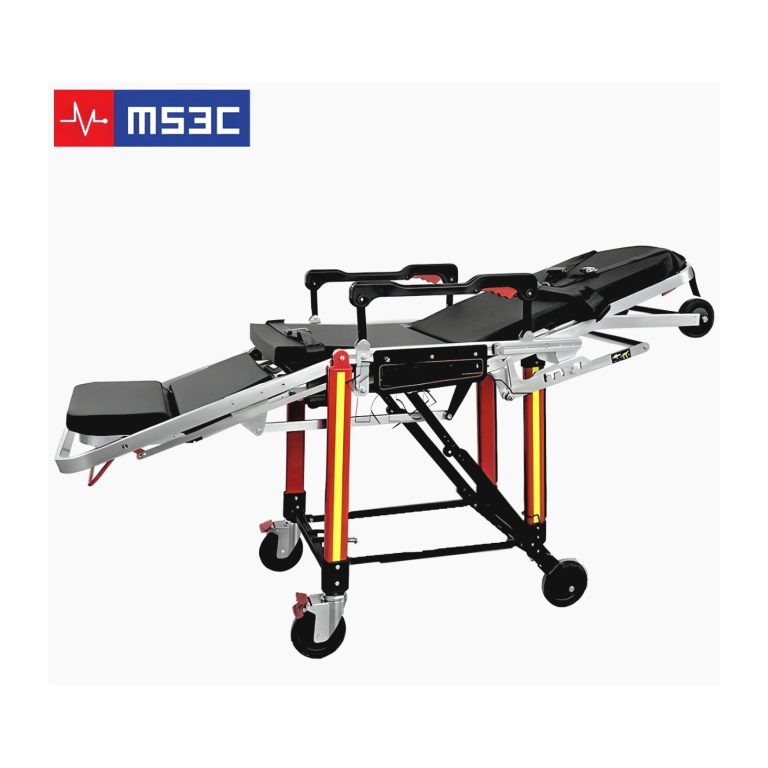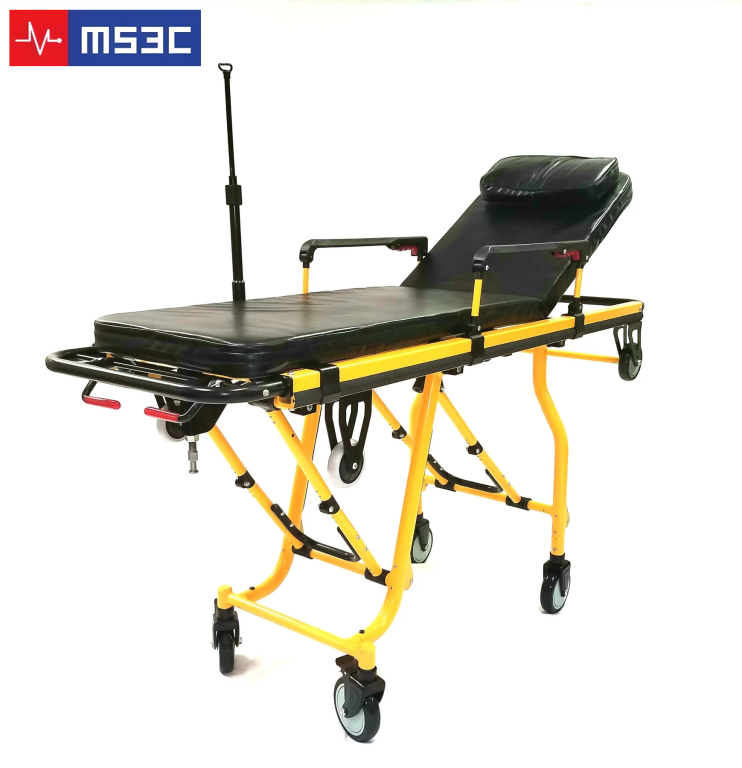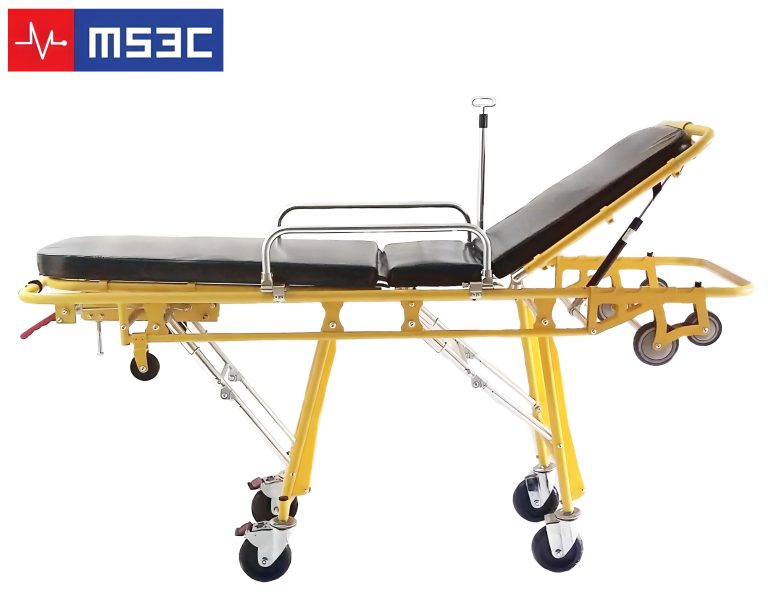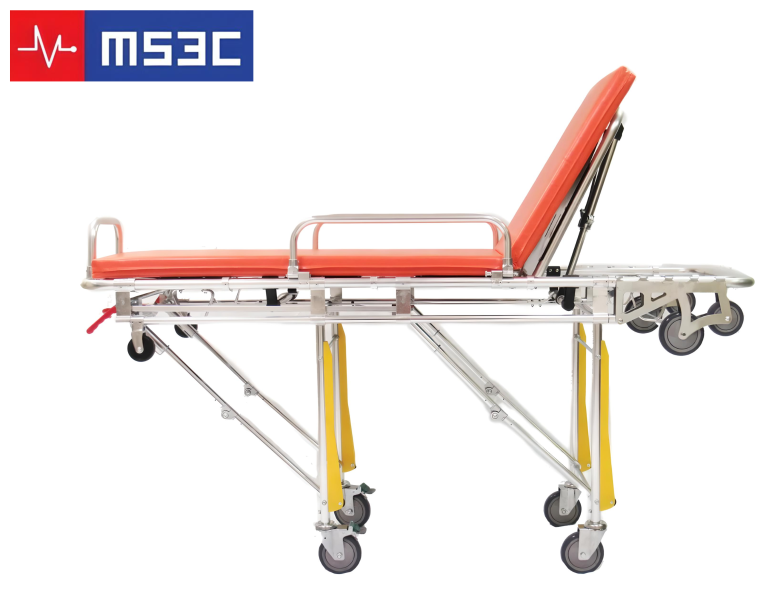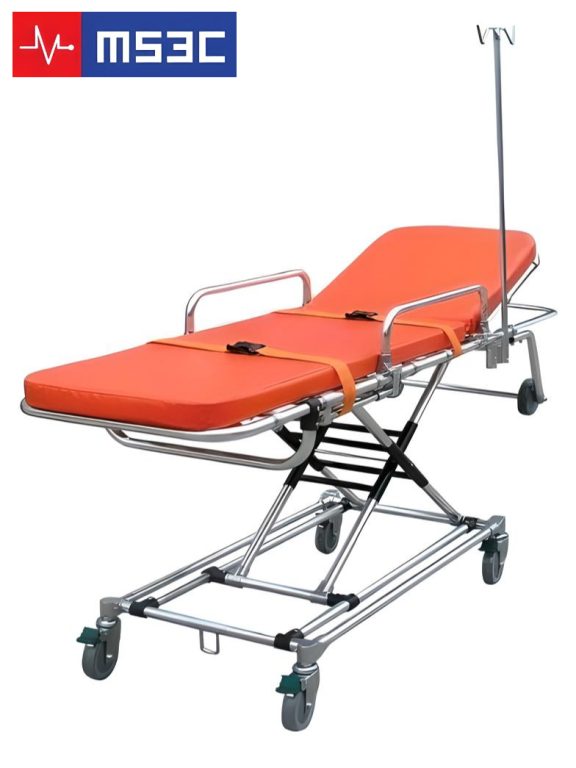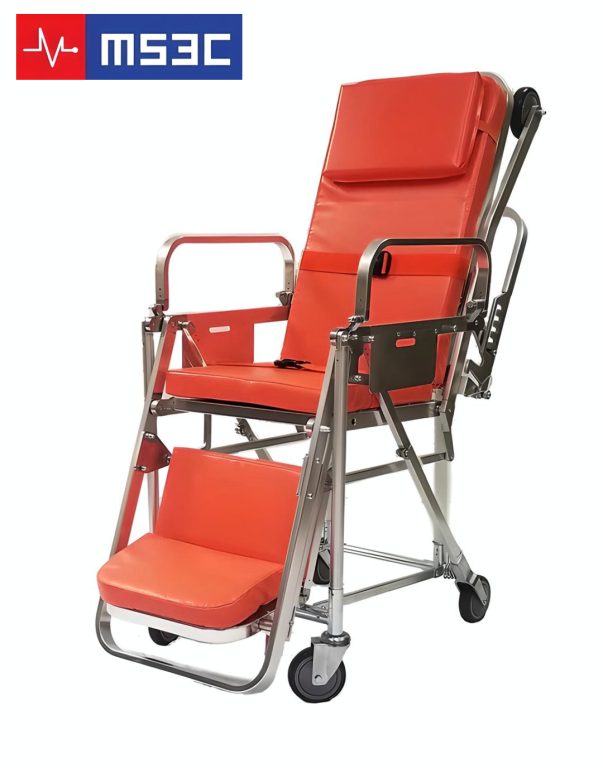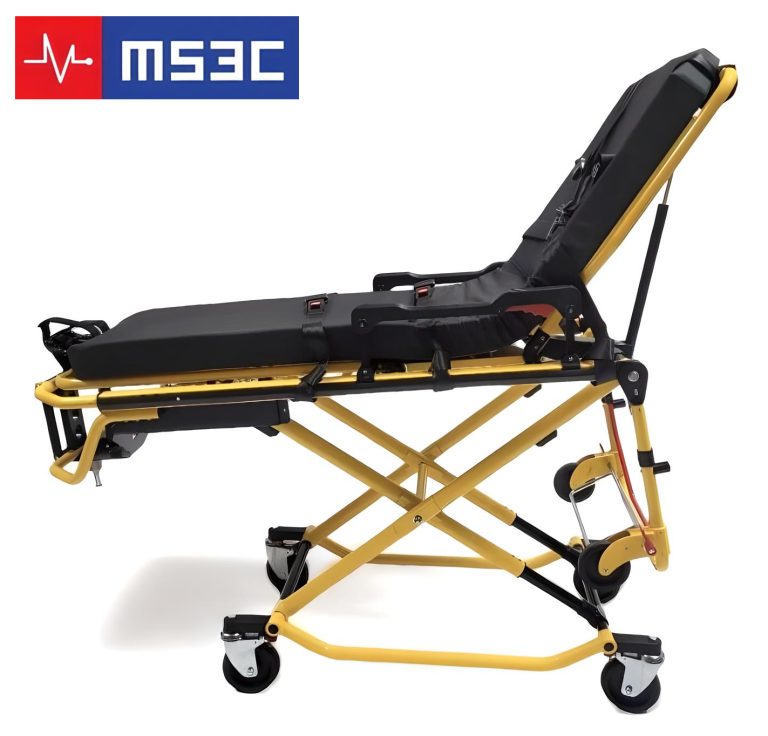Secure Patients Reliably, Quickly and Safely with EMS and Ambulance Stretchers
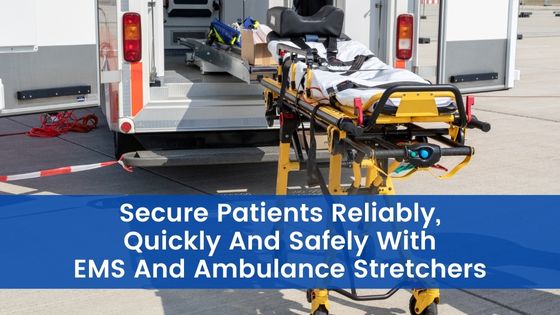
Whether it’s an emergency situation or a routine trip to a specialist, medical providers and caregivers need a safe, cost effective and reliable way to transport patients. MSEC’s EMS and ambulance stretchers offer that, along with several stability and usability-enhancing features.
Our ambulance and EMS stretchers are built for all types of medical teams, including:
- At-home healthcare providers, nurses and family members
- Fire departments/EMS providers
- Acute care hospitals
- Rescue teams
- Private medical transport companies
- Nursing homes
Whenever a patient requires proper medical transport, MSEC stretchers can get the job done.
Twelve Features of MSEC’s Ambulance and EMS Stretchers
MSEC offers an array of EMS and ambulance stretchers, each built with numerous features that include:
- Lightweight and single operation designs – Some of our stretcher models are designed for at-home care providers like nurses. These stretchers are built with a lower weight and are designed for a single person to operate. Our lightweight builds are also designed for lower vehicle heights, which are ideal for personal vans.
- Commercial-grade builds – For EMS teams and hospital facilities, MSEC also offers commercial-grade builds constructed from durable aluminum alloy and stainless-steel materials.
- Extensive positioning options – MSEC stretchers come with a wide range of adjustment options, include preset positions for quick patient positioning and optimal comfort.
- Manual or pneumatic positioning – Some MSEC stretchers are designed for manual positioning, with locking handles built on both sides. Other models are built with pneumatically assisted adjustment, which provides smoother positioning and ease of use with bariatric patients.
- Thick, fluid-resistant mattresses – Our stretchers are designed with thick foam mattresses that ensure patient comfort during transport. They’re also fluid-resistant and easy to clean.
- Oversized, heavy-duty casters – Our EMS and ambulance stretchers also come with large swivel casters built with premium materials. During transport, the casters’ larger size and maneuverability ensure maximum control with minimum effort.
- Vehicle locking mechanisms – Locking mechanisms and restraining belts also come standard with our stretchers. These devices are easily installed into a transportation vehicle to ensure easy and safe transportation of patients to the final destination. .
- Side rails and patient restraints – It is important for stretchers to be usable with unconscious or unpredictable patients. Stretchers designed with adjustable side rails and patient straps to keep them in place are ideal.
- IV pole and oxygen tank holder – Some of our stretchers are also designed with additional capacity, including room for an IV pole, oxygen tank holder or patient document compartment.
- Extended stretcher width – Some MSEC stretcher models are available with an extended width, which helps with patient comfort and stretcher stability.
- Extended load height – Some of our stretchers can also be loaded up to 31” high, which makes them an ideal option for commercial EMS and hospital ambulances.
- Extremely high patient capacity – We also offer bariatric stretchers designed with much higher loading capacities. Some are rated for up to 600 pounds, which is greater than most stretchers used in the field.
Ambulance stretchers can be generally segregated into H-frame and X-frame stretcher designs.
What’s the Difference Between an H-frame Stretcher and an X-frame Stretcher?
H-frame and X-frame stretchers are named for their shape. When unfolded, the legs on an H-frame stretcher extend vertically to the ground, producing an H shape. With an X-frame stretcher, the legs go up and down in a scissor like pattern. What difference does that make in practice?
X-frame stretchers can have a higher loading height without sacrificing stability. That makes them ideal for EMS commercial vehicles, larger patients, and for active medical facilities, Commercial grade X-frame, non-powered stretchers typically require two operators to load and unload stretchers into a vehicle.
- H-frame stretchers tend to be lighter weight than their commercial counterparts and can also be loaded and unloaded by a single operator. Legs of H-frame stretchers are spring loaded and will automatically fold when the locking mechanism is released and pressure is applied to the plastic bumpers on the front of the legs. Legs will automatically deploy when the stretcher is pulled out of the vehicle.
Ultimately, the differences are subtle. Both X-frame and H-frame stretchers can be used in personal and professional medical transport applications.
When selecting an ambulance stretcher, you will need to know 1) the loading vehicle height, which is the vertical distance from the ground to the top of the bumper or loading platform, 2) available space inside the vehicle, 3) maximum weight capacity requirements, and 4) whether one or two operators are available on calls. If you still have questions, talk with an experienced technician who can assist you in selecting a stretcher which will best work for your specific needs.
MSEC’s EMS and Ambulance Stretchers are Designed for All Types of Care Providers
Medical response teams and at-home care providers are responsible for getting their loved ones or patients to treatment and appointments quickly, safely, and economically as compared to a commercial EMS company. Our stretchers can help with that, ensuring your patients aren’t just taken care of following transport, but during it as well.
No related posts.

